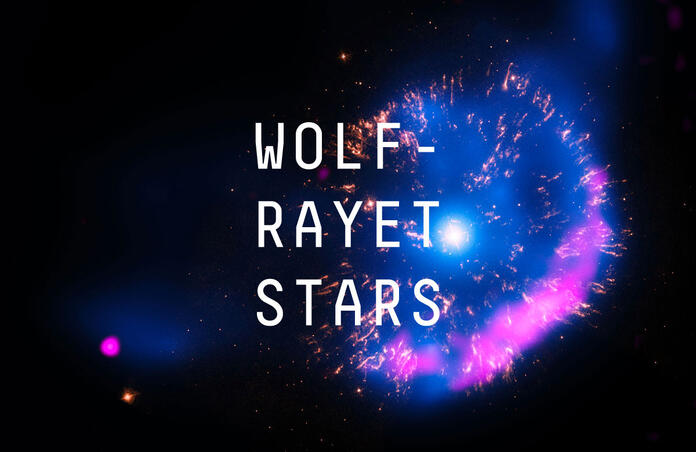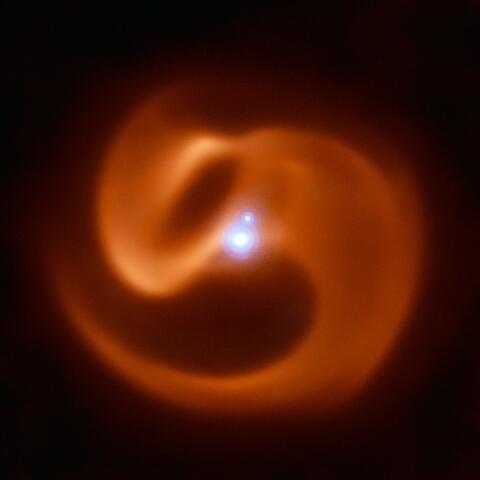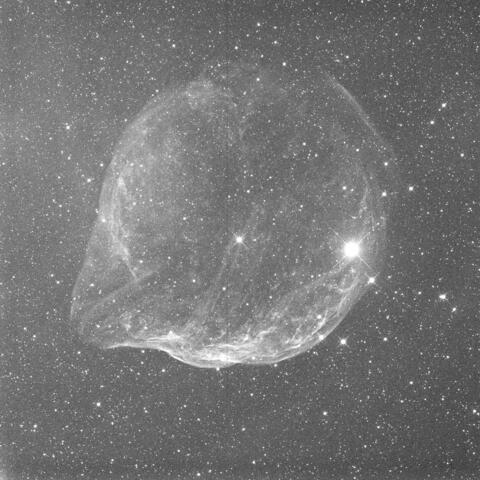What is a Wolf-Rayet Star?

A fascinating type of star is the Wolf-Rayet star: supermassive, super-energetic, and surrounded by a super-aesthetic Wolf-Rayet Nebula.
Wolf-Rayet stars (WR stars) are born with about 20 times the mass of the Sun. As you might expect, this means that they will very rapidly convert their hydrogen into helium – in millions of years rather than billions like the Sun. Still, only one out of a hundred million stars will evolve into a WR Star. As a subtype of emission-line stars, what mainly sets them apart is not just their mass, but their spectra. There are three categories of WR stars, with spectra dominated by emission lines from Nitrogen (WN), Carbon (WC) or Oxygen (WO). Some supergiants have intermediate spectra and are denotated with a slash notation, e.g. the star WR25 which actually has spectral type O2.5If*/WN6, hence the appellation slash stars.
To obtain these spectra, during their Wolf-Rayet phase, the super-supergiants eject a lot of their mass, mainly the outer shells containing mostly hydrogen, forming a “Wolf-Rayet Nebula” – these have often been misclassified as HII regions or planetary nebulae when the central star’s nature was unknown. However, in the line-forming “wind region” at the star’s surface, the radiation causes the other elements to “glow”, i.e. emit the characteristic lines. For WN stars, the Nitrogen comes from the CNO-cycle, a way of burning Hydrogen that is efficient in hotter stars, in the WC and WO stars where no Hydrogen burning occurs at all anymore the elements are the product of Helium fusion.

Actually, “Wolf-Rayet Galaxies” also exist; they are a type of starburst galaxy. Those have higher than average star formation rate and thus use up their gas and dust much faster than typical galaxies; the WR galaxies specifically contain a lot of WR stars undergoing the aforementioned processes, thus the Hydrogen gas of these galaxies gets transformed into heavier elements much more quickly. A few years ago, a rare system was discovered in our own Milky Way: in the Apep triple star system, two WR stars orbit each other closely, with a third supergiant star orbiting both. Due to the stellar winds and rapid rotations of the central two, the stardust forms a “pinwheel nebula”. It is expected that there will be gamma-ray bursts coming from the 8000-lightyears distant system when these massive stars undergo their final supernova, before becoming black holes.
In terms of what you can observe, due to the energy generated by these bodies their main luminosity output is in the ultraviolet regime. So, although their overall luminosity can be hundreds or even hundreds of thousands of times the Sun’s, individual WR stars from other galaxies may not be distinct from their companions if you observe in the visible range. For the 500 specimens in our galaxy though, the visible magnitude is high enough for good observations.

You can try the one-click observation of the Dolphin Nebula, where the most impressive feature is not the central WR star but the almost perfectly bubble-shaped WR nebula!
Cover Image: GK Persei, colour-combined image X-ray: NASA/CXC/RIKEN/D.Takei et al; Optical: NASA/STScI; Radio: NRAO/VLA
Image Credits:
1- Apep, VLT, ESO/Callingham et al.
2- Sh2-308, CHI-4, M. Gisiger
